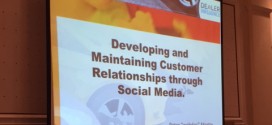Email marketing provides a lot more flexibility. The delivery schedule isnâ??t dependent on outside factors. For example: if you have important company news you want to share with your customers, you can simply email them within minutes instead of waiting for a magazine or newspaper to print the press release in hopes your customers will read the article. However, just because email gives you instant access to your subscribers doesnâ??t mean you can email them impulsively or impetuously. Your emails must follow a plan that is as well thought-out and deliberate as all of your other marketing initiatives in order to remain effective.
The problem that most email marketers face is how to plan the schedule without the same restrictions set by other media. Itâ??s difficult to know how often and when to send email messages.
Some of the areas that can help solve this dilemma are:
- Metrics and analytics: A tool that gives marketers more control over their data capture is web analytics. Web analytics track the click stream data users generate as they visit pages on your website.
- Dynamic profiling: A tool that puts the control back into the marketerâ??s hands. It is a behavioral tracking tool that automates specific data capture.
- Dynamic content: Using dynamic content can build targeted email campaigns that fit all of your subscriberâ??s purchasing habits. It is a complex mail merge technique that relies on a single message template with multiple customizable fields.
- DIY data: This includes: survey forms, opt in requests, preference centers, etc.
- Using data to determine optimal frequency: There isnâ??t a magic formula to tell you when and how often to send messages to your subscribers/customers, but if you capture the right data, you wonâ??t need one.
Following these procedures will take the guesswork out of your delivery schedule and will make it easier for you to plan future campaigns. It will let you know how often to send emails to your lists, as well as the best time to send them. It will also increase the satisfaction and loyalty of your subscribers, ensuring your companyâ??s reputation remains intact.
With the downturn in the economy, companies are searching for cost-effective, measurable ways to combat sagging sales. Marketing online is the most effective way to generate sales. Today, too many marketing and sales professionals are focusing on how to make traditional advertising methods work instead of focusing on increasing traffic to their web site.
The new era of advertising has arrived, and it is online advertising. This includes email marketing and search engine marketing. Consumers are now in control; they are browsing online for products and then deciding whether to make their purchase online or go directly to the retail location. Buying decisions are no longer influenced by repeated exposure to the same content. Instead, they are built on information, education, and discussions among influential communities of like-minded individuals.
As most people are searching for products and services online, search engines such as Google are becoming more and more vital. To be where the majority of consumers are seeing your company, you must be on the first page of the search engine results page. Nearly 95% of consumers NEVER go past the first page of the Google search engine. So if your company is not on page one, you are non-existent to potential customers.
This is why Search Engine Optimization (SEO) is essential for your company to engage in. SEO is the process of making your web site more visible to search engines and achieving higher ranking on the results pages. Your websiteâ??s placement on page one of Google will drive more traffic to your website, which in turn increases revenue and sales!
Companies today need to focus on the words and messages they are using to communicate with their prospects and how they leverage this content to maximize their online exposure. At a time when more companies are chasing fewer prospective customers, you need strong online messaging with a deep analysis of the results.
Peter "WebDoc" Martin
Latest posts by Peter "WebDoc" Martin (see all)
- The Yelp Check In Feature - February 22, 2019
- Climbing - September 29, 2015
- Still on the Zip Line - September 29, 2015
 TheWebDoc.tv A Breakdown of the Do's and Don'ts of Websites to Companies to Ensure their Websites are Working for them. Providing ongoing advice for the latest technology and marketing tools out there.
TheWebDoc.tv A Breakdown of the Do's and Don'ts of Websites to Companies to Ensure their Websites are Working for them. Providing ongoing advice for the latest technology and marketing tools out there.










